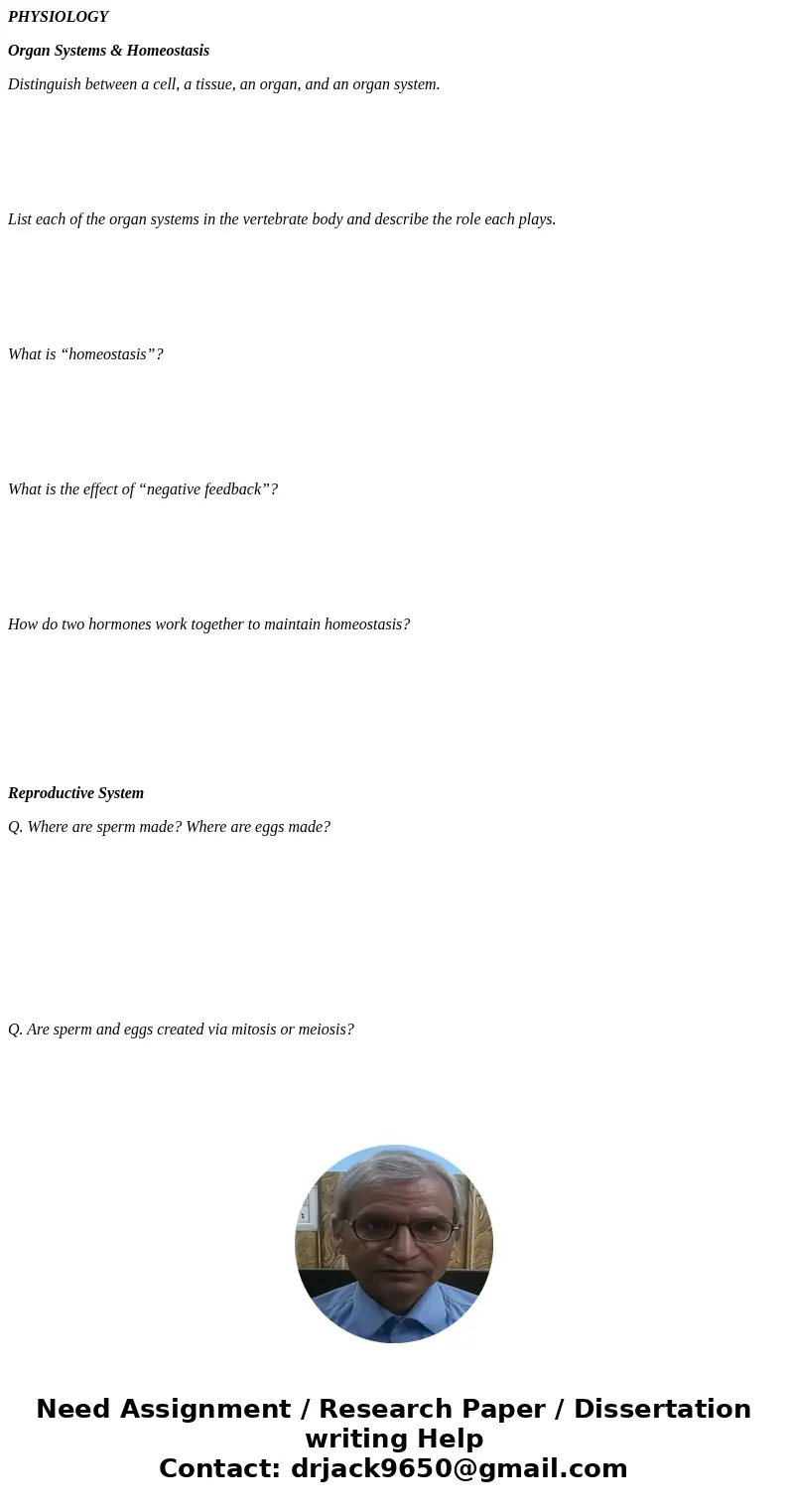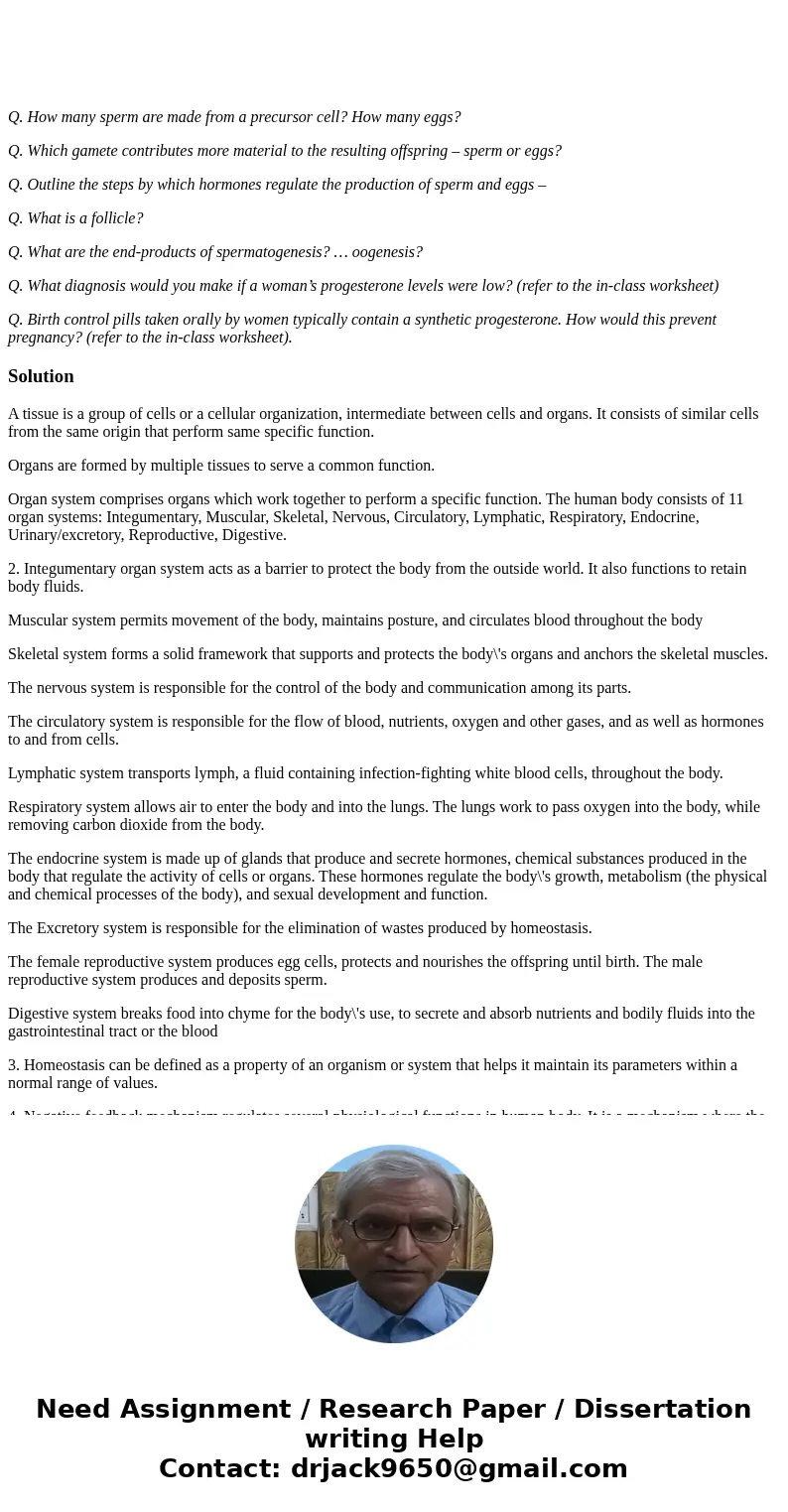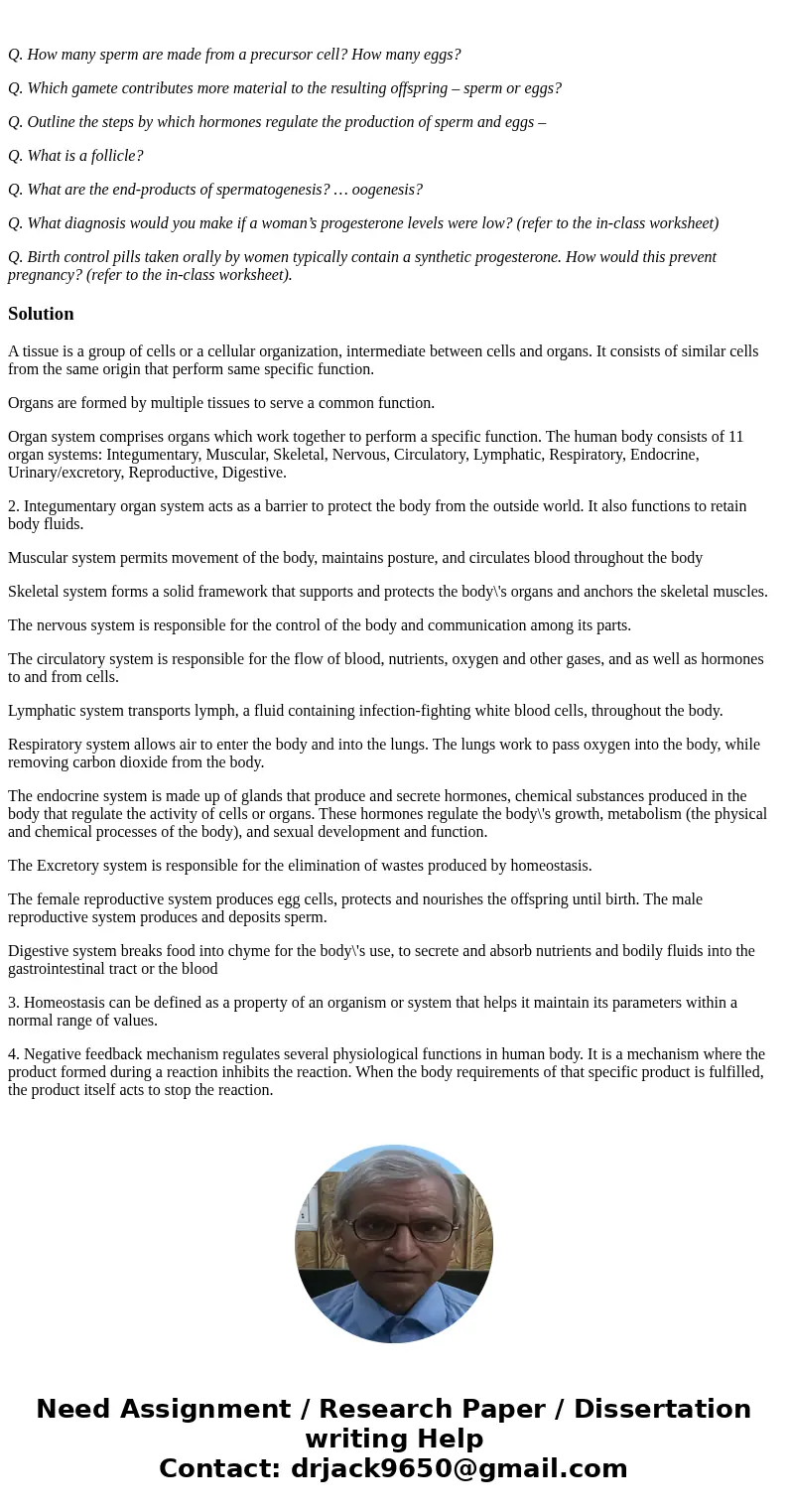PHYSIOLOGY Organ Systems Homeostasis Distinguish between a
PHYSIOLOGY
Organ Systems & Homeostasis
Distinguish between a cell, a tissue, an organ, and an organ system.
List each of the organ systems in the vertebrate body and describe the role each plays.
What is “homeostasis”?
What is the effect of “negative feedback”?
How do two hormones work together to maintain homeostasis?
Reproductive System
Q. Where are sperm made? Where are eggs made?
Q. Are sperm and eggs created via mitosis or meiosis?
Q. How many sperm are made from a precursor cell? How many eggs?
Q. Which gamete contributes more material to the resulting offspring – sperm or eggs?
Q. Outline the steps by which hormones regulate the production of sperm and eggs –
Q. What is a follicle?
Q. What are the end-products of spermatogenesis? … oogenesis?
Q. What diagnosis would you make if a woman’s progesterone levels were low? (refer to the in-class worksheet)
Q. Birth control pills taken orally by women typically contain a synthetic progesterone. How would this prevent pregnancy? (refer to the in-class worksheet).
Solution
A tissue is a group of cells or a cellular organization, intermediate between cells and organs. It consists of similar cells from the same origin that perform same specific function.
Organs are formed by multiple tissues to serve a common function.
Organ system comprises organs which work together to perform a specific function. The human body consists of 11 organ systems: Integumentary, Muscular, Skeletal, Nervous, Circulatory, Lymphatic, Respiratory, Endocrine, Urinary/excretory, Reproductive, Digestive.
2. Integumentary organ system acts as a barrier to protect the body from the outside world. It also functions to retain body fluids.
Muscular system permits movement of the body, maintains posture, and circulates blood throughout the body
Skeletal system forms a solid framework that supports and protects the body\'s organs and anchors the skeletal muscles.
The nervous system is responsible for the control of the body and communication among its parts.
The circulatory system is responsible for the flow of blood, nutrients, oxygen and other gases, and as well as hormones to and from cells.
Lymphatic system transports lymph, a fluid containing infection-fighting white blood cells, throughout the body.
Respiratory system allows air to enter the body and into the lungs. The lungs work to pass oxygen into the body, while removing carbon dioxide from the body.
The endocrine system is made up of glands that produce and secrete hormones, chemical substances produced in the body that regulate the activity of cells or organs. These hormones regulate the body\'s growth, metabolism (the physical and chemical processes of the body), and sexual development and function.
The Excretory system is responsible for the elimination of wastes produced by homeostasis.
The female reproductive system produces egg cells, protects and nourishes the offspring until birth. The male reproductive system produces and deposits sperm.
Digestive system breaks food into chyme for the body\'s use, to secrete and absorb nutrients and bodily fluids into the gastrointestinal tract or the blood
3. Homeostasis can be defined as a property of an organism or system that helps it maintain its parameters within a normal range of values.
4. Negative feedback mechanism regulates several physiological functions in human body. It is a mechanism where the product formed during a reaction inhibits the reaction. When the body requirements of that specific product is fulfilled, the product itself acts to stop the reaction.



 Homework Sourse
Homework Sourse